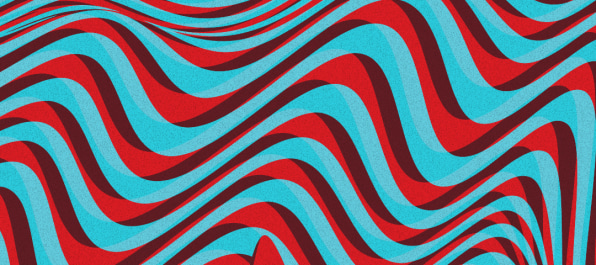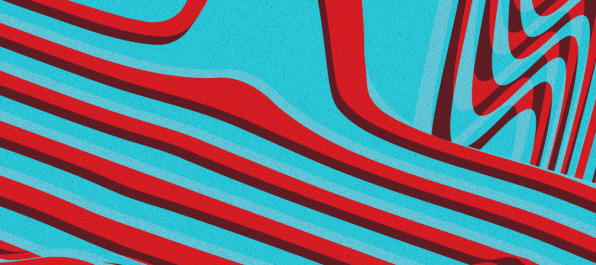Tremendous cultural and technological changes have expanded the parameters of identity design. Here are four key principles for branding in the age of ambiguity.
The emergence of new technology has changed and will continue to change the identity design profession. Gone are the days when fluency in the Adobe Suite was as far as your technological expertise needed to stretch. The past few years have brought web and mobile design to the fore; now there’s VR/AR, and increasingly bots and artificial intelligence. Even if identity designers aren’t working in these mediums directly, they are increasingly asked to understand their value and their challenges in order to communicate them to the general public.
We saw these shifting technologies and priorities reflected in the projects submitted to this year’s Fast Company Innovation By Design Awards. Of the finalists in the Graphic Design and Data Visualization category, several projects focused on branding for mobile apps, or for companies for whom mobile was a central focus (see R/GA’s Can’t Stop campaign for Samsung, or Moving Brands’s animated branding for the Magisto app). There was also the Brooklyn-based agency Praytell, which designed an animated 3D logo and overall identity system for the virtual reality company Within. Meanwhile, our winner in this category, Wolff Olins’s branding for dotdot, ingeniously visualized a new universal IoT language for the forward-thinking Zigbee Alliance. Even with other finalists whose projects skewed toward more traditional identity or data design work (see Base Design’s visual language for JFK’s Terminal 4, or Artefact’s USAFacts website), we were struck by the ways they leveraged technology to create work that’s both visually effective and incredibly useful.
We reached out to four firms honored in this category to ask about what is in store for the branding space over the next 10 years. What new technologies should designers be fluent in? What ethical issues should they be prepared to face? And how do they expect branding to have changed 10 years down the road?
From their answers, we put together four branding principles for the future of design:

1. LEARN HOW TO USE CUTTING-EDGE DESIGN TOOLS–BUT DON’T LET THEM TAKE OVER
“Over the past five years we’ve come to expect wider technical expertise and media fluency–strong candidates are no longer just Illustrator, InDesign, Photoshop experts, but also skilled at 3D modeling, animation, coding, and editing. Constantly shifting formats necessitate adaptable systems for different audiences and expressions from brand experiences, spaces, layout or even logo design.
“The design industry is in danger of pointless banality and a sea of sameness–from designers pulling all the same references to simply producing inoffensive work. Increasingly, as we face competition from crowdsourcing and generative automatic design there is a lot of work that might look OK, but lacks deeper meaning or the ability to standout with purpose. The risk of purely decorative design is that it simply fails to give meaning — or at its worst, even obscures unethical behavior.”—Cynthia Pratomo, creative director at Wolff Olins & Jan Eumann, design director at Wolff Olins

2. DON’T JUST COMMUNICATE–LOOK FOR WAYS TO SHAPE THE TOOLS OF COMMUNICATION
“We seek out UX designers who understand that technologies change, but fundamental human behaviors and needs are much more constant. It’s important that UX designers are always fluent in what’s next, but at the same time have a core understanding of people, their motivations, and their priorities that carry through no matter what medium they are working in.
“More and more, designers need to be good communicators. First, they need to be able to jump into a broad range of problems and complex situations and be able to listen carefully and learn what clients are truly asking for. Designers then need to be able to communicate what it is they create and why, and we are increasingly looking for fresh and different methods for doing this, such as using VR to prototype an experience rather than showing screens and slides. As communicators, designers have the rare ability to create their own tools to communicate, so young designers should be exploring and pushing how we can design new ways of presenting what we do in the most compelling ways possible.”—Holger Kuehnle, UX designer, Artefact

3. ADOPT AN ETHICS-FIRST DESIGN PROCESS
“Looking toward the future, the humanization of technology, whether it be bots or fully realized AI technologies, is well underway. We will as designers need to take gender, name, tone of voice–literally, to developing functionality, personality, attitude, and more–into consideration as brand collides with these artificial ‘beings.’ It indeed raises many ethical questions and represents both a challenge and opportunity. It’s worthy of discussion and deep thinking.”—Min Lew, creative director and managing director, Base Design, New York

4. EMBRACE AMBIGUITY
“We are on the cusp of so many utterly transformative technologies that the world will be a very different place, even in the near future. AR and MR will become more commonplace, less clunky, and more indispensable. Automation and machine learning will mean that we interface with technology less and less. Which leads to the interesting question of how you can create a distinct signature when a brand has few or no touchpoints?
“Clients’ needs are becoming less clearly defined–we often don’t know what the outcome will be at the start of the process. In fact, the process is sometimes helping them find what they need rather than answering a need. We use design to help prototype and pilot various scenarios rather than to answer a brief. Things just aren’t that neat anymore.”—Sean Murphy, creative director, Moving Brands
–
This article first appeared in www.fastcodesign.com
Seeking to build and grow your brand using the force of consumer insight, strategic foresight, creative disruption and technology prowess? Talk to us at +9714 3867728 or mail: info@groupisd.com or visit www.groupisd.com


